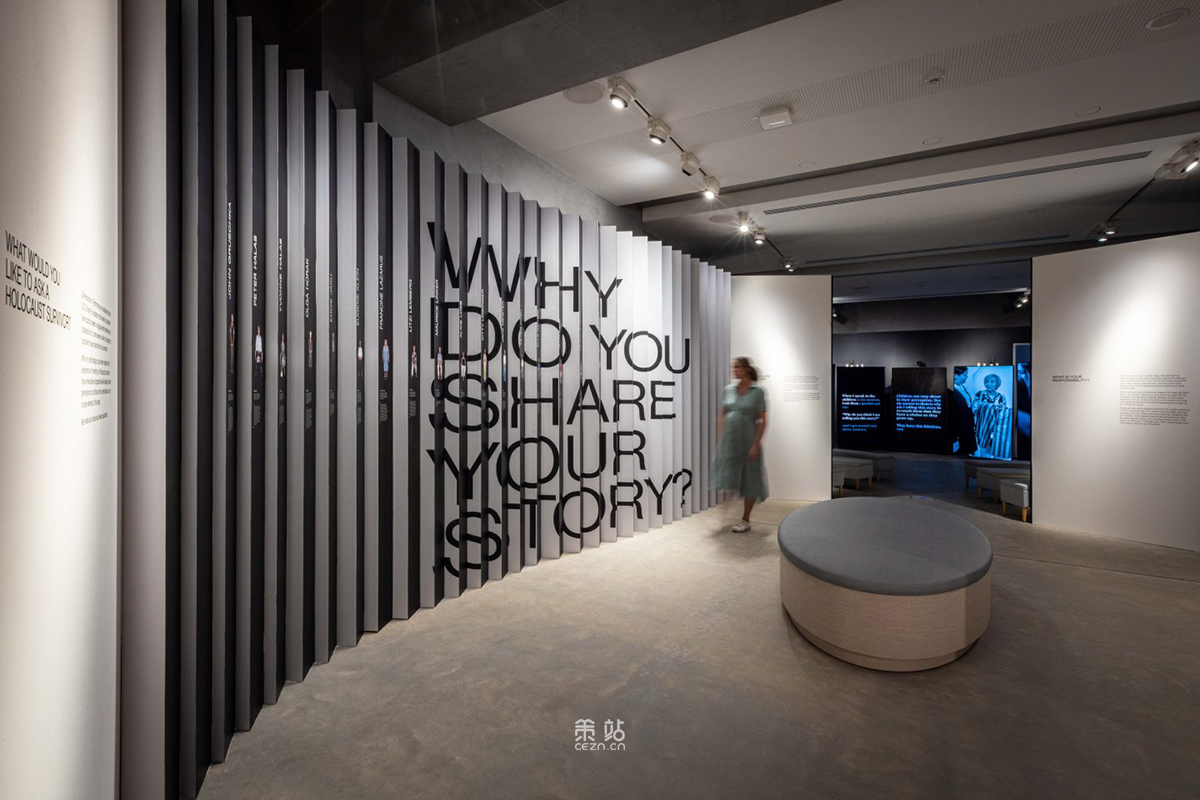
一个新的展览展示了证词如何在个人、社区和代际之间产生影响。
证词是了解大屠杀历史的重要来源。它塑造了大屠杀之前、期间和之后欧洲犹太人生活的历史叙述。证词是确保人们及其故事优先于统计数据的一种方式。我们的展览以幸存者用自己的话讲述他们的故事为特色,赋予他们对自己的叙述的权威,追究肇事者的责任,并蔑视那些试图否认他们的故事和大屠杀本身的真实性的人。
A new exhibit shows how testimony can make a difference across individuals, communities and generations. Testimony is an important source for understanding the history of the Holocaust. It shapes the historical narrative of Jewish life in Europe before, during and after the Holocaust. Testimonies are a way to ensure that people and their stories take precedence over statistics. Our exhibition features survivors telling their stories in their own words, giving them authority over their accounts, holding perpetrators accountable, and defying those who seek to deny the veracity of their stories and the Holocaust itself.
——————
伙伴:悉尼犹太博物馆、南加州大学大屠杀基金会
服务:展览设计、媒体设计
Sydney Jewish Museum
---
展品介绍
展览首先介绍两个基本元素。“什么是见证?” 解释了证词对于了解大屠杀的核心作用。《大屠杀历史与记忆》解释了历史与记忆之间的区别及其相互联系。走廊上摆满了幸存者的家庭照片,其中夹杂着采访问题。
Exhibits introduction The exhibition first introduces two basic elements. "What Is Witnessing?" explains the centrality of testimony to understanding the Holocaust. Holocaust History and Memory explains the difference between history and memory and their interrelationships. The hallways are filled with family photos of survivors, interspersed with interview questions.
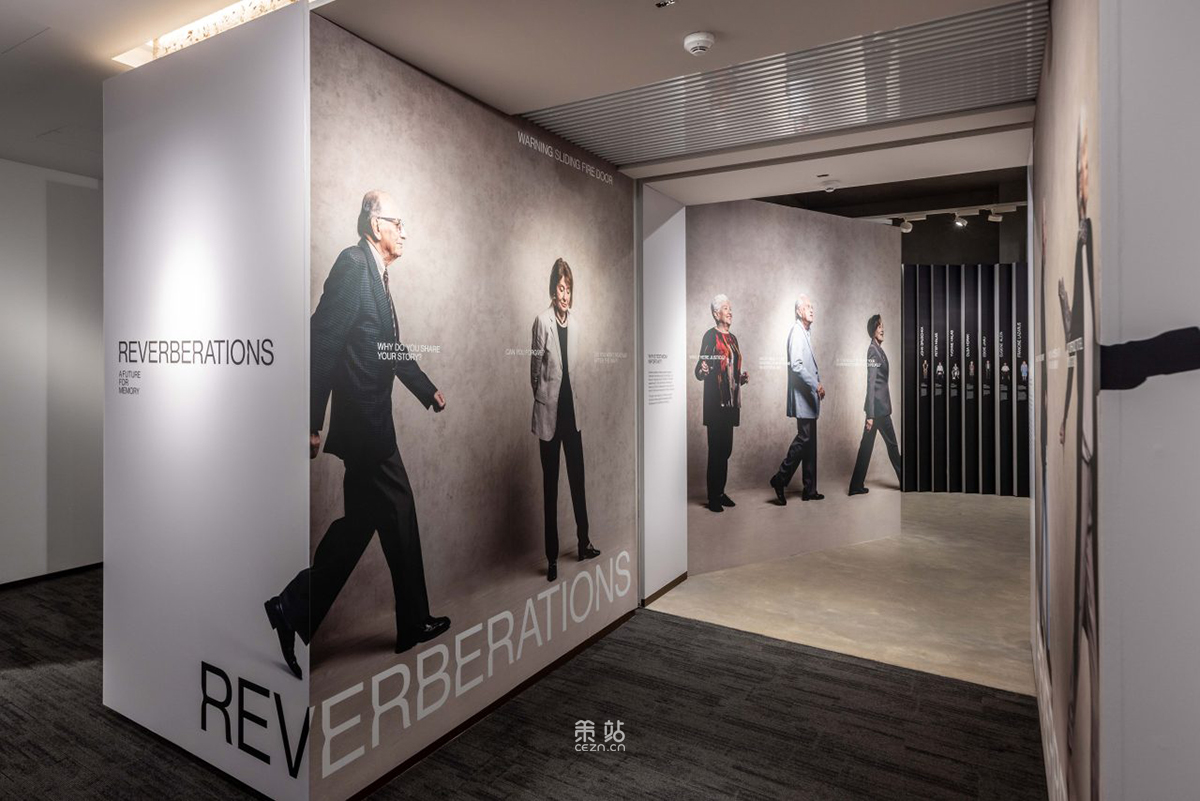
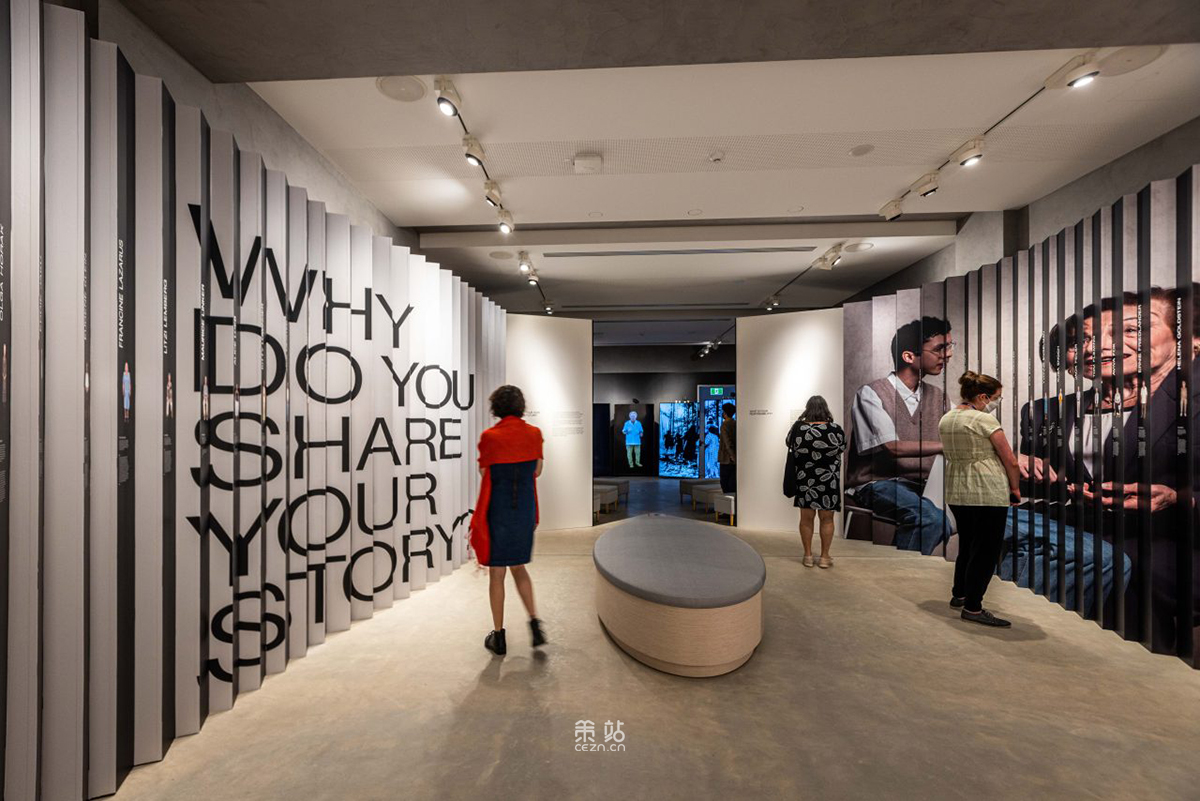
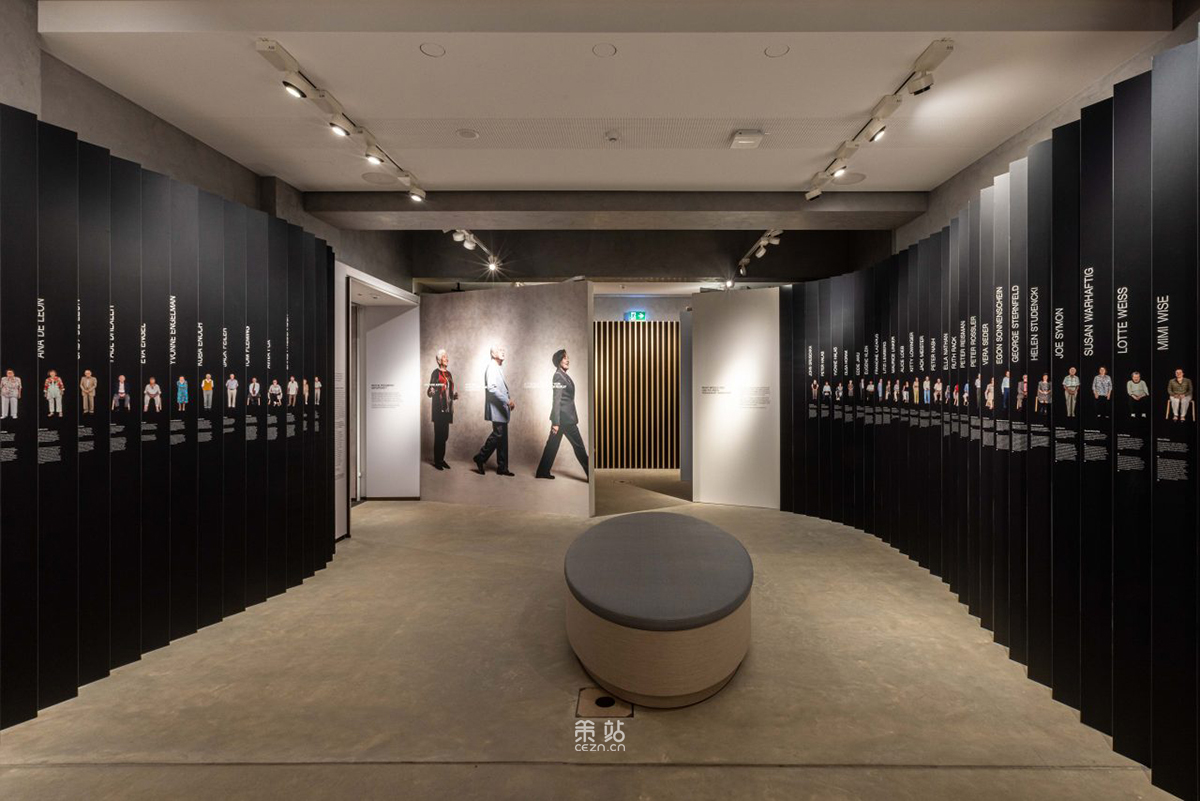
你为什么分享你的故事?
在展览的核心内,透镜状的墙壁体现了混响的概念。从一个角度来看,透镜状的墙上写着“你为什么分享你的故事?” 以大图形印刷。西面的透镜状墙上展示了一张幸存者与观众分享他们的故事的照片。
Why are you sharing your story? Within the core of the exhibition, lenticular walls embody the concept of reverberation. Viewed from one angle, the lenticular wall reads "Why are you sharing your story?" printed in large graphics. A lenticular wall to the west displays a photograph of survivors sharing their stories with viewers.

集体见证
在展览的后面,媒体作品将电影、声音和证词文本以及历史图像(包括幸存者的个人照片)编织在一起。
根据访谈问题对证词进行主题编辑。幸存者单独或以 2-3 人为一组出现在不同的屏幕上,分享各自的故事。总而言之,这些不同的经历和观点为过去、现在和未来对大屠杀的理解奠定了基础。
collective witness Later in the exhibition, media works weave together film, sound and testimonial texts, and historical imagery, including personal photographs of survivors. The testimony was thematically edited based on interview questions. Survivors appear individually or in groups of 2-3 on separate screens and share their stories. Taken together, these diverse experiences and perspectives provide the basis for past, present, and future understandings of the Holocaust.
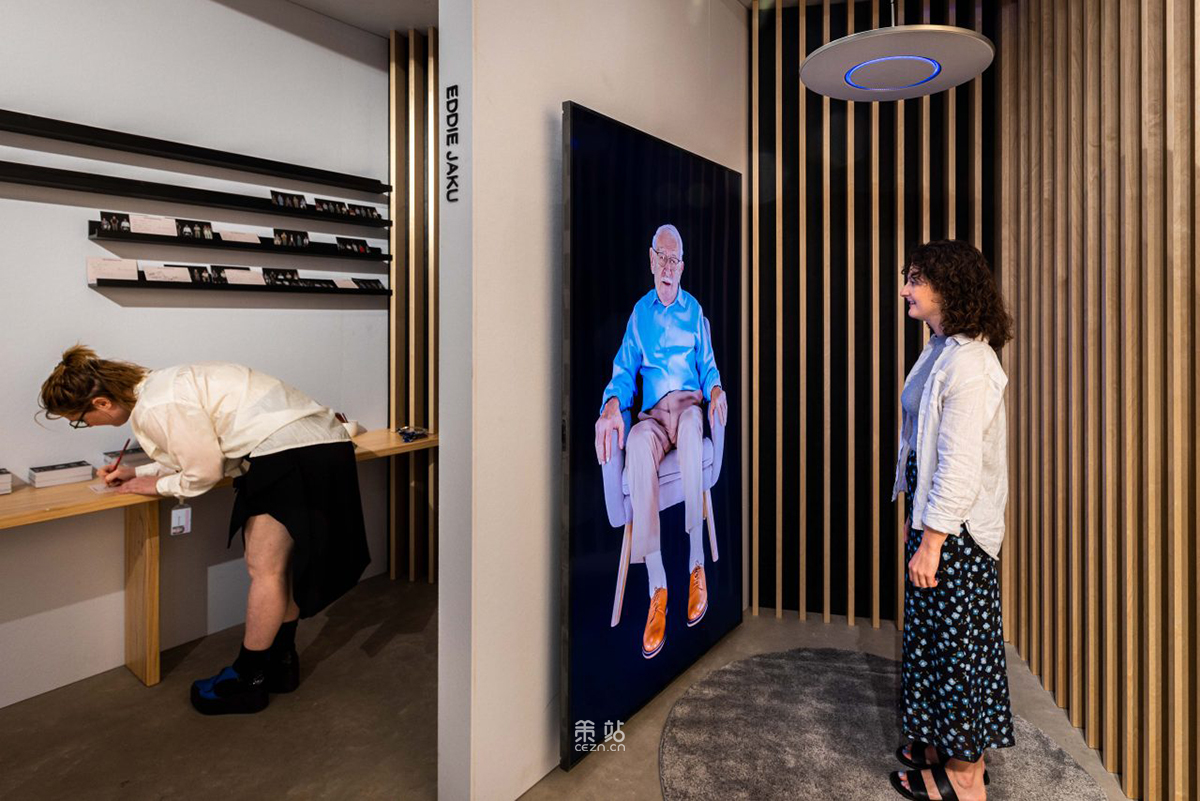
见证与反思的维度
由南加州大学大屠杀基金会开发的“证词维度”背后的技术使参观者能够在向幸存者提出直接问题时成为口述历史学家以及积极参与的听众。语音识别技术根据所提出的问题提供预先录制的答案。
还包括一项额外的自愿捐款活动,邀请访客直接写给幸存者和/或其家人关于他们的证词对个人的影响。
Dimensions of Witness and Reflection The technology behind Testimony Dimensions, developed by the USC Holocaust Foundation, enables visitors to become oral historians as well as actively engaged listeners as they ask survivors direct questions. Speech recognition technology provides pre-recorded answers based on the questions posed. An additional voluntary contribution campaign is also included, inviting visitors to write directly to survivors and/or their families about the personal impact of their testimony.
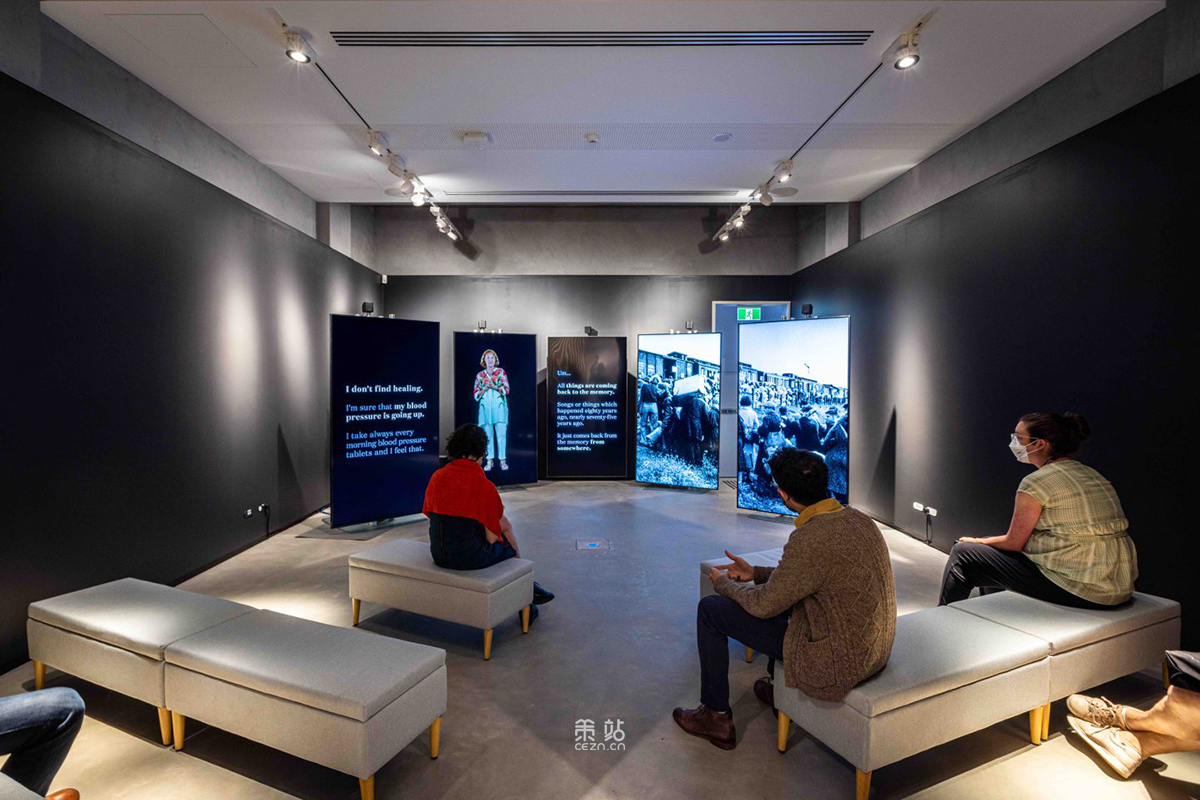
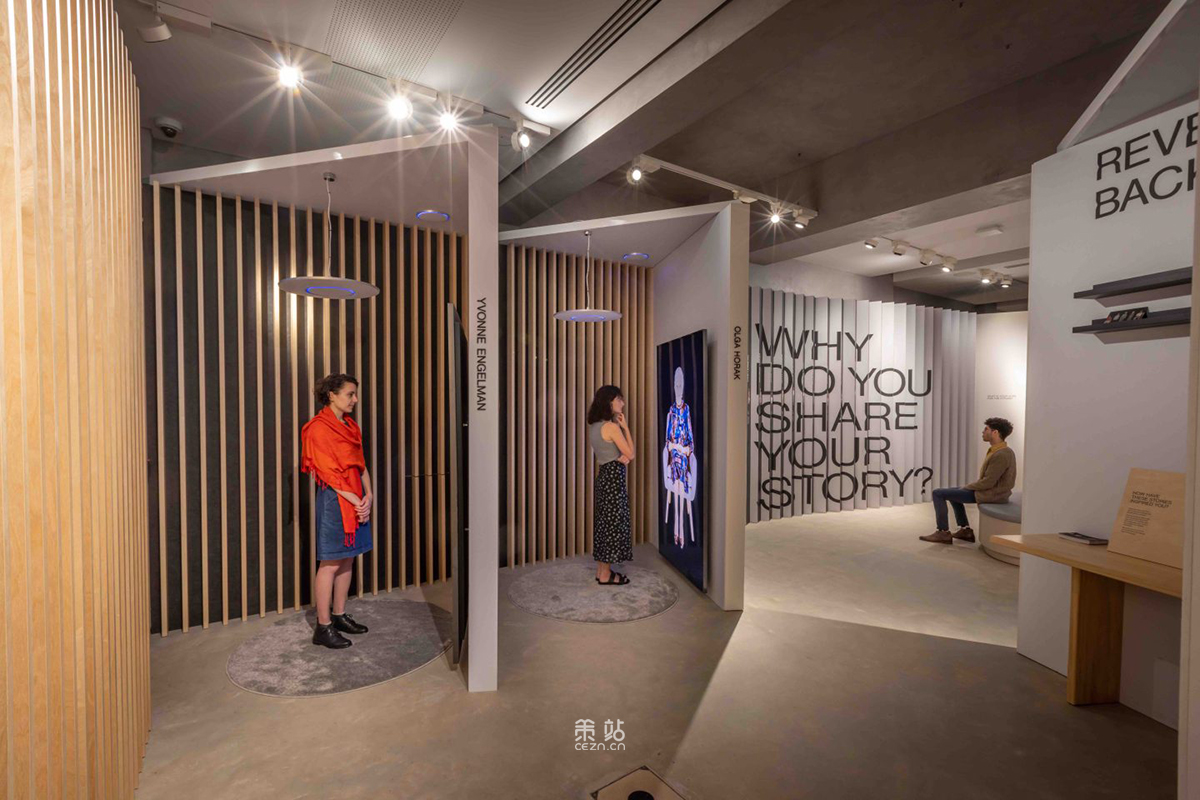
项目信息
伙伴: 悉尼犹太博物馆、南加州大学大屠杀基金会
服务: 展览设计、媒体设计
版权©策站网cezn.cn,欢迎转发,禁止以策站编辑版本进行任何形式转载